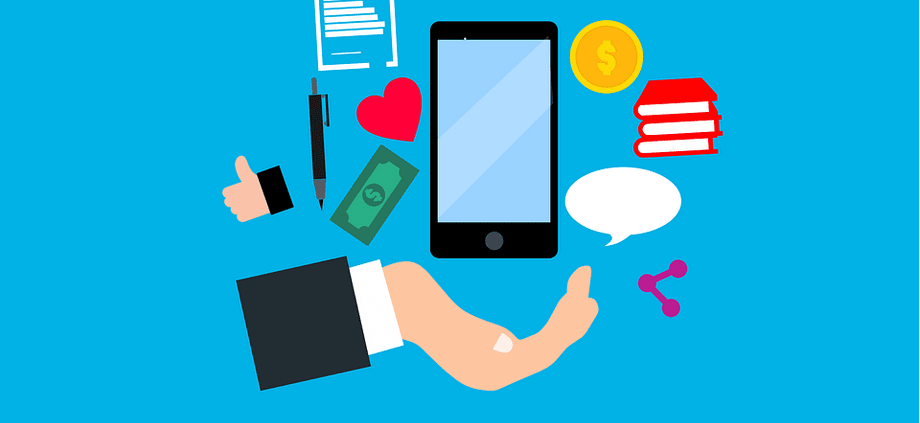How to Monetize An App
There are many routes you can take in mobile app monetization. In this post, we are going to discuss several mobile app monetization strategies and their potential impact on app engagement and growth.
- Paid and free app versions model
One reputable app monetization strategy is to offer both the paid and free versions of your mobile application. With this monetization model, app developers will either limit some of the app’s features in the free application to encourage and compel the free app users to upgrade to the paid version of the app; or even monetize the free app with in-app advertising.
The benefits of this particular monetization strategy are two-fold. On one hand, it provides users with a free option to experience and experiment with the app’s basic functionality at no cost. On the other, it gives the app developer the user base much required for potential monetization via in-app advertising or app upgrades.
- Free app with an in-app purchase model
Another app monetization strategy is in-app purchases. The app and all its basic features are free. However, if the user wants to upgrade in the app faster, for instance, gaining more lives in a gaming application, or enjoying certain premium features in a dating app, they can subscribe to the pay-to-play model.
In some cases, users can still access premium features and functionality without paying a dime. If they’re patient enough to wait for certain features to be unlocked or interact with the app long enough, they can use the app for free. In other cases, such free options may not be available, and the app developers would only make particular things for free, and others would be only attainable through in-app purchases.
- Email lists
Using an email monetization strategy tie-in with your mobile app is a fantastic way to gain engagement from your users, which leads to more money and sales. Why? Well, because people hardly change their email addresses. That makes an email marketing strategy an effective model to ensure people see your content and engage with it. Regular emails also keep you at the forefront of a customer’s mind, making them more likely to purchase from your business.
The average life of a Facebook post is a few hours; a tweet’s lifespan is only over an hour, and an email has an average lifespan of ten days. And the best way to gather all email addresses is to add an email subscription form to your app.
- Free app with a subscription model
Some programmers and developers decide to design free apps with a subscription model. With this strategy, the app is free to download with limited access to certain services and products. This model requires users to opt into a subscription plan to enjoy the full benefits. This app monetization strategy is common among service-oriented apps or content-centric apps such as news apps (Washington Post, New York Times, Gannett, Weather Channel, Financial Times, Wall Street Journal, and The Athletic). The free app with a subscription model makes your app easily discoverable in the app stores when users search for related content. This model is a great monetization strategy to build an initial user base and cultivate this into paid app subscriptions.
- Partnership model
If an app is popular among a certain population, businesses may approach the developer for strategic partnership. This partnership comes through sponsorship opportunities to put brands, products, and services in the eyes of app users.
So, when you’re planning for the next app to build, think about the target user base the app may appeal to and the type of brands or companies that might be interested in your app’s user base. If the user base is large enough, monetization through partnership, brand sponsorship, and acquisition could be a great option.
- Paid app model
In some cases, developers will make their apps available only in the paid version. Usually, these apps offer unique value that’s hard to find anywhere. This strategy is most common among productivity apps.
If you take this route, the mobile app you create must offer exceptional value and unique functionality that meets certain user needs. Otherwise, you may find a hard time building the user base to generate revenue for your new app.
- Transactional apps
If you own an invoicing or a financial app, one easy way to monetize it is to charge a service or transaction fee. As digital marketplaces expand and continue to grow, this strategy has also grown in its application. There are several ways the transactional model can be useful than just in the financial apps where customers are charged for making a transaction.
This model has potential advantages in any e-commerce app (product and service marketplaces alike). Common apps that use this model include wholesale and retail marketplaces, hotel booking apps, travel apps, and e-learning marketplaces. So, if you opt for the service fee strategy, ensure to charge a reasonable percentage of the entire transaction. Alternatively, you can set a flat rate that favors most consumers. Either way, you stand to monetize your app most effectively.
- Creating strong code
Perhaps the most important but often overlooked app monetization strategy is creating a strong code. If you develop your unique code from scratch and it proves to be successful, businesses and brands may approach you and offer to reskin your app for their purposes.
By licensing your app to other developers, you can make money without disturbing or disrupting your users’ experiences. For instance, the popular mobile game Temple Run was re-skinned to Temple Run Oz as a film. Other games that have been re-skinned to films include: Die Hard Arcade, Bionic Commando, Tecmo Cup Soccer Game, and Black Belt US.
Another thing to consider with code-sharing is your own app’s endgame. After your brand or business has gotten enough value from the app and is preparing to delve into the next stage, you can sell it as a whole to a new buyer who is willing to use your existing framework to create their app. Luckily, there are many ways of doing this, like using Apptopia which is a popular site for buying and selling mobile apps.
In addition, white labeling your app is analogous to selling it as a whole – without selling off your IP. The only problem here is that there will inevitably be multiple versions of your code in the marketplace. Regardless, you will be sure to make money by saving other developers from having to develop the code from scratch. All it takes is for your app to be initially constructed out of a strong, desirable source code.
NS804 – Honing Your App Monetization Strategy
Creating an awesome mobile app for your brand is not the endgame. Although customers can interact with the app and learn more about your business, there’s something else you can do to make your app work for you: monetize it. Before you monetize, you need to find a monetization strategy that works best for you. To access superior mobile app development solutions, feel free to visit NS804 for inquiries.

 https://pixabay.com/vectors/mobile-phone-apps-marketing-concept-5836879/
https://pixabay.com/vectors/mobile-phone-apps-marketing-concept-5836879/



 https://unsplash.com/photos/bMTl6uFMONg
https://unsplash.com/photos/bMTl6uFMONg
Leave a Reply
Want to join the discussion?Feel free to contribute!